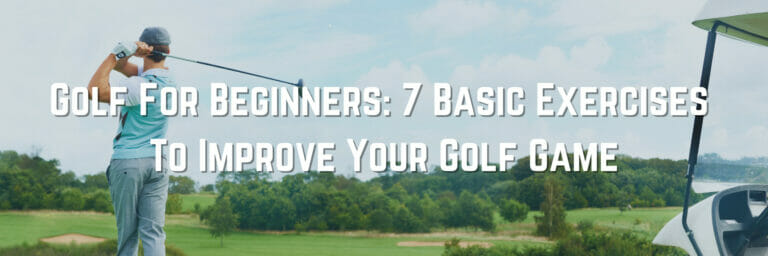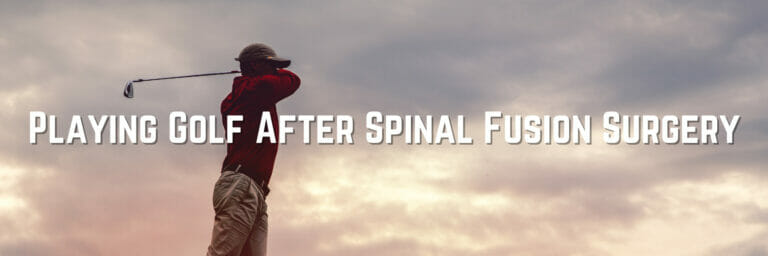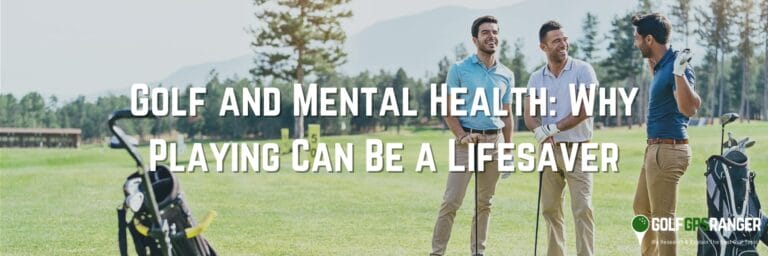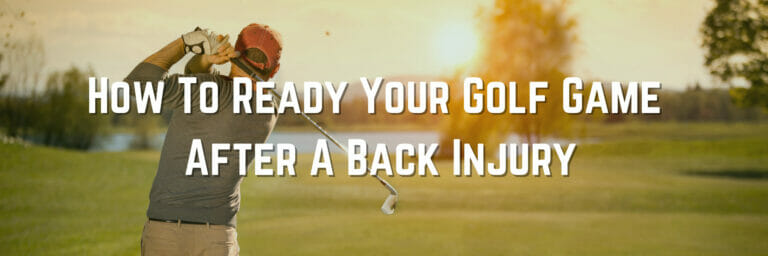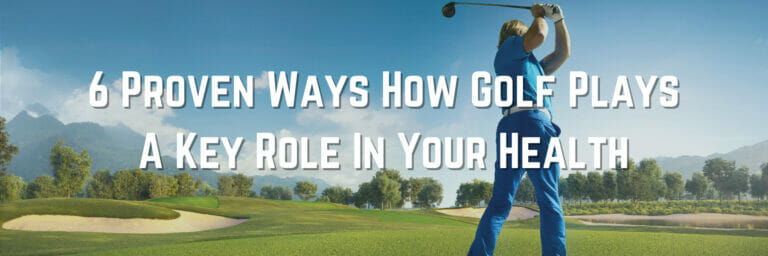Golf Physical Therapy For Best Golf Performance
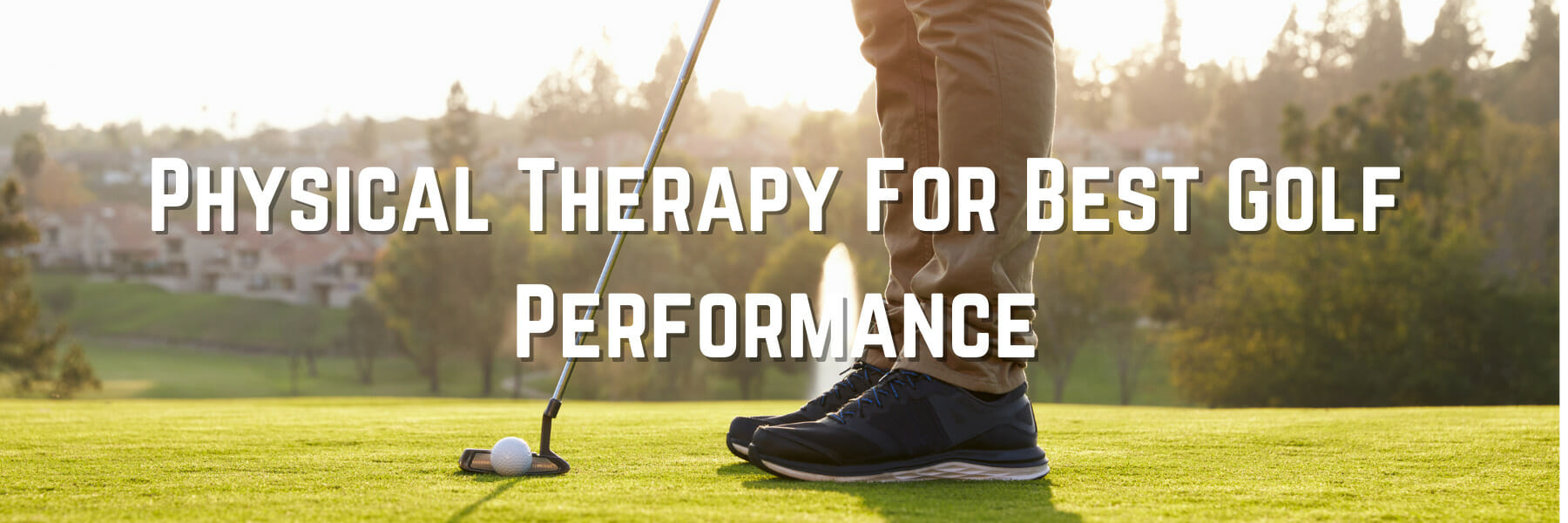
!!!!DISCLAIMER!!!! This site may contain Amazon & other affiliate links.
This means if you click on one of the product recommendation links, this site may receive a small commission. This is at no extra cost to you and may include exclusive discounts when possible. This helps support this site and allows us to keep making content like this. Thank you for your support!
Whether you play golf every day or just a few times a year, optimal fitness can really boost your performance and prevent golf-related injuries. The muscles in the body can only do so much; golfers with tight muscles, poor body mechanics, or joint restrictions can have trouble executing their swings. Even good golfers can benefit from regular golf physical therapy to help advance their game.
Golf is a highly skilled sport, requiring great upper body strength, flexibility, and balance. People new to the game often try learning to play from watching television or reading books.
Even experienced golfers can benefit from one-on-one training with a professional instructor. However, most players never seek out the services of a golf physical therapist for evaluation and training, even when dealing with pain and fatigue associated with golfing. A basic understanding of the importance of physical therapy is important in achieving good physical fitness and skill level in any sport.
Why Do Golfers Need Physical Therapy?
Physical therapists providing golf physical therapy will evaluate your swing to identify areas where you may need to improve flexibility, strength, or performance for playing better golf. They may recommend stretching, balance training, or posture corrections to improve your game.
Physical therapists can train you in safe ways to strengthen muscles and joints to move efficiently and with proper mechanics. They can also work on improving balance issues that are common in golfers related to their often heavy club heads and bags.
A physical therapist will assess your swing using video analysis, gait analysis, strength tests for muscles used in the golf swing, and questionnaires for muscle pain and fatigue.
They will then create a plan of exercise, manual therapy (manipulation), and education designed to help you maintain an active lifestyle as well as play better golf.
You might want to consider golf physical therapy if one or more of the following situations below are applicable to you:
- If you get sore or have pain during or after playing golf
- To prevent injury to muscles and joints from doing repetitive golf swings, especially if you have a history of past injuries
- If you are new to golf, learn proper posture and mechanics of the swing through certified training with a professional instructor and physical therapist
“A good golfer has the determination to win and the patience to wait for the breaks” – Gary Player
Common Golf Injuries That Need Physical Therapy
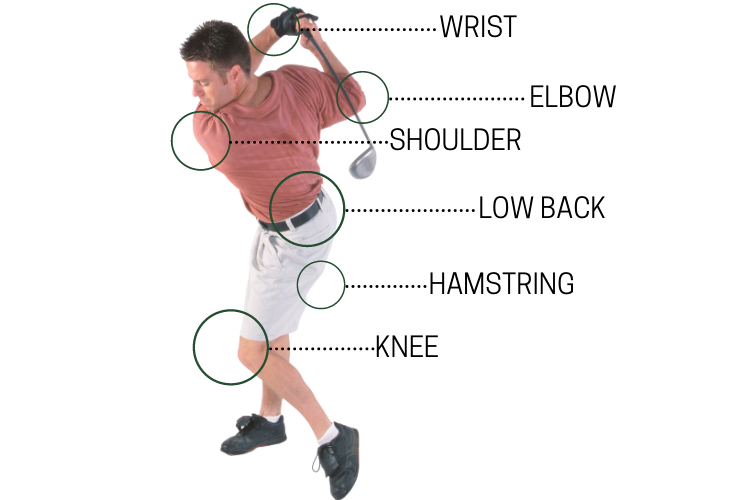
- Back Pain
- Wrist Pain
- Shoulder Pain
- Low Back Pain
- Rotator Cuff Injuries – A rotator cuff is a group of muscles and tendons that connect the arm to the body. Although golfers are less likely to suffer rotator cuff injuries because they don’t have to throw or lift objects as in other sports, they can suffer from bad posture and repetitive stress injuries during the course of a golf game.
- Hamstring Injuries and/or Strains – The hamstrings are muscles located in the back of the thigh. Golfers often experience back pain and other joint problems from swinging a golf club.
Low back pain and hamstring injuries are common among those who do not strengthen their muscles prior to beginning the sport. Golf physical therapy can help prevent these injuries by strengthening leg muscles, improving flexibility, and relieving pain.
Most injuries respond well to physical therapy, although recurrence can be a problem for those who return to their old swing habits, don’t pay attention to proper technique, or don’t follow through with a home exercise program.
Treating Golf Injuries

Physical therapy can help with many types of golf injuries. Whether the injury s a result of poor swing mechanics, repetitive stress from poor posture, or overuse, physical therapy can help with treatment and rehabilitation.
A physical therapist will help you determine the cause of your injury and design an appropriate treatment plan that incorporates a range of motion exercises, strengthening exercises, balance exercises, and flexibility exercises.
Physical therapists will also teach you how to avoid injury by warming up, using good technique, and avoiding motions that cause strain or discomfort to joints.
Ideally, a physical therapist will have training in sports physical therapy from an accredited school.
The Physical Therapist’s Role in Golf
In addition to prescribing exercises, a physical therapist may also be able to provide some assistance with proper body mechanics for your golf swing. Improper body mechanics can lead to muscle tightness and injury.
A physical therapist may be able to address minor posture issues by simply performing some corrective exercises or stretches a few times per week before you play.
Here is a short video from a physical therapist / golf expert sharing his thoughts about golf injuries and physical therapy:
Get in Shape for Golf with Physical Therapy
Being fit does not automatically make you a better golfer, but it can definitely help and reduce your risk of injury if you already play golf regularly.
Below is a quick guide to golf physical therapy, both preventative and rehabilitative.
Preventive
Many preventative services for golf are the same as any sports-related program, with some tweaks for specific issues that are common in golf. It is important to develop good posture through a full range of motion in the joints in the body.
Good posture also helps prevent injuries that can slow down your playing time. Golfers also benefit from a range of motion training and stretching exercises to help keep muscles loose before, during, and after play.
The muscles used when playing golf can be extremely tight if they aren’t used regularly in daily life. Range of motion exercises and stretches can reduce the chances of injury over time.
Golf-specific exercises are also a good way to prevent injuries that could affect your game. Golfers benefit from strengthening the muscles around the shoulder, elbow, wrist, and hand.
This helps reinforce the bones in these areas for a solid foundation to launch off of during swings. Any area in your back or legs that support your swing should be strengthened as well to help protect against injury.
Golfers can also benefit from stretching exercises for areas such as the hip, back muscles, and flexor muscles in the forearm to encourage good form while you swing.
Preventive Exercises for Golfers
The most important aspect of physical therapy for golf is exercise. It is critical to developingstrong, flexible muscles to achieve a powerful, smooth swing. Golf exercises will be specific to the muscles and joints used in the golf swing and designed for your sport.
You can check out this article from Mayo Clinic for a list of preventive exercises you can do on your own.
Here’s an article from The Journal Of The Canadian Chiropractic Association that explains how resistance training may also improve golfers’ performance and prevent any type of golf injury in the future.
Rehabilitative Golf Physical Therapy
It is important to seek out medical care when you are injured, don’t play your best, or cannot continue normally. A physical therapist can assess your injury or pain and help develop ways to prevent further problems.
Golfers can take part in golf physical therapy after an injury, illness, or surgery to help speed up their recovery and prevent future problems. A physical therapist will work with you on your range of motion, strength, balance issues and give you exercises that will help you return to your sport safely and quickly.
When a golfer is injured, he or she will not be able to play. This can be especially frustrating for those who love golf and have been playing for many years.
Many people are unable to continue their regular participation in a sport they love because of injury or pain preventing them from performing the movements necessary.
Golf Recovery and Rehab
A physical therapist can work with you to design a program to improve your range of motion, balance, and strength. The exercises will be specifically designed for you based on the injuries you are experiencing or the pain you are feeling in your back, neck, shoulders, elbow, or wrist.
The goal of golf physical therapy is to help you gain enough strength and flexibility so that you can play your best again.
A physical therapist can also help you deal with the swelling, stiffness, and pain from injuries through the use of various modalities like ultrasound, ice, or heat.
Treatment may include massages, electrical stimulation, and joint mobilizations to improve flexibility in muscles and joints. A physical therapist may also provide therapeutic exercises such as stretching, strengthening exercises, or balance training to prevent future issues with your back, neck, or shoulders.
Rehabilitative Exercises for Golfers
A physical therapist will work one-on-one with you to design a program that is specific to your injury or pain.
A sample list of the physical therapy exercises for golfers may include:
Golf Balance and coordination
If you are injured and cannot swing a club, then it is important to address your balance, coordination, and strength in non-golf-specific movements.
A physical therapist can help you improve your balance by working on activities like standing on one leg with eyes closed, walking heel-to-toe down the line, or doing exercises on balance boards or wobble cushions.
Golf Flexibility and Stretching
The fluidity within your joints is very important when it comes to the golf swing. A physical therapist can help you increase your flexibility through stretching exercises on the ground or on a table with various techniques like PNF (proprioceptive neuromuscular facilitation) stretching, static stretching, active isolated stretching, and manual techniques.
Golf Strength Training
In order to prevent injuries, it is really important to build strength around a joint or in an area that is weak, such as the triceps for the backswing. A physical therapist can design specific strengthening exercises to help you gain stability and strength around a painful area of your body.
Golf Cardiovascular Health
Physical therapists can design exercises that get you up and moving to improve cardiovascular health. This is important for all athletes because it improves your heart health, endurance and strengthens your connective tissue.
A physical therapist can design a program to help improve your overall body conditioning. Working with a physical therapist can be a very effective way to stay healthy and fit while improving your golf game.
If you have golfer’s elbow, these stretches and exercises should help relieve the pain:
The Importance of Golf Physical Therapy In Performance and Health
Golf can be played by anyone at any level, but as you age, there are some best practices that can help ensure you have an enjoyable game for many years to come.
Working with a physical therapist who understands the biomechanics involved in your specific swing and body build can help create an individualized program to improve your game and help prevent injuries from occurring in the future.
Frequently Asked Questions
1. What type of golf injury needs physical therapy?
A: Golfers of all skill levels can suffer a variety of injuries. The most common ones are golf elbow, low back pain, and shoulder impingement syndrome.
2. How do I find a good physical therapist?
A: Ask other golfers, and check with the professional clubs you belong to see if they have a recommended list of local physical therapists. And if you recently had surgery on or near your shoulder, hip, or knee, ask your orthopedist for the names and phone numbers of PTs he or she knows to be competent with these types of injuries.
3. What is the best age to start golf physical therapy?
A: Golf is a lifelong sport that can be played well into your later years. A proper evaluation of your swing and body mechanics can help you prevent injury to the joints as you get older and hopefully improve your golf game!
Kids need a baseline assessment of their skills when they start playing as well to help with any improvements they may need in posture or form.
4. Does golf physical therapy work for injuries not related to the game?
A: Golf is different than most other sports because it uses many small muscles throughout the body instead of larger ones like running or swimming does.
This means that if you overuse one muscle, it can create problems in other areas of your body. An evaluation by a physical therapist can go a long way towards preventing injuries and keeping you playing longer.
5. Does golf physical therapy work for kids?
A: Absolutely! In fact, children are a great candidate for golf physical therapy because they are not as skilled at scoring and reading the greens as adults are.
Often kids will change their swing to make up where they lack skill, creating bad habits that can lead to injury in the future. A PT evaluation will help identify bad habits and incorrect posture so you can create a correct golf swing early on, reducing your chance of injury later on!
6. How long does golf physical therapy take?
A: The process of getting an accurate evaluation of your golf swing can take anywhere from 1-2 hours, depending on the number of muscles and joints we need to test, as well as the skill level you have demonstrated.
You should plan to come at least once a week for 4-6 weeks and continue those visits until you are pain-free and playing better than before.
